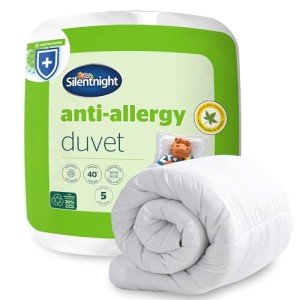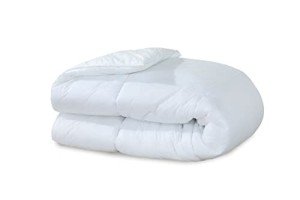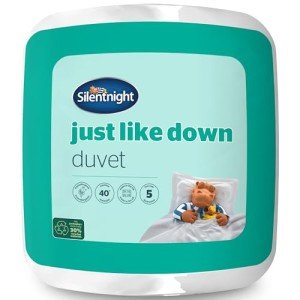When it comes to a good night's sleep, choosing the right bedding is essential. Among the various options available, a cozy anti-allergy duvet stands out as a versatile solution for year-round comfort and health. Designed to minimize allergic reactions and provide ample warmth, these duvets are suitable for every season. In this article, we will delve into the benefits, materials, features, and care of a cozy anti-allergy duvet, as well as answer some frequently asked questions.
What is an Anti-Allergy Duvet?
An anti-allergy duvet is specially designed bedding that helps reduce allergens such as dust mites, pet dander, and mold. It is typically filled with hypoallergenic materials and encased in a tightly woven fabric to prevent allergen infiltration. Whether it’s summer, winter, or the transition months of spring and fall, an anti-allergy duvet delivers the comfort and protection needed for undisturbed sleep.
Benefits of Anti-Allergy Duvets
-
Allergen Reduction: This is the primary benefit. Anti-allergy duvets help reduce exposure to allergens which is essential for individuals with allergies or asthma.
-
Comfort and Warmth: Made with insulating materials, these duvets provide warmth during colder months while remaining breathable for warmth in summer.
-
Durability: High-quality anti-allergy duvets are designed to withstand multiple washes without losing their shape or effectiveness.
-
Easy Maintenance: Many anti-allergy duvets are machine washable, making cleaning hassle-free.
-
Versatility: Suitable for all seasons, these duvets can be used in different climates and can often adapt by using different duvet covers.
Materials Used in Anti-Allergy Duvets
The materials used in manufacturing anti-allergy duvets are crucial for their effectiveness and comfort. Here are some common materials:
| Material | Description |
|---|---|
| Microfiber | A synthetic material that is soft, lightweight, and exhibits hypoallergenic properties. |
| Natural Cotton | Breathable and soft, cotton is less likely to harbor dust mites, especially when treated for anti-allergenic properties. |
| Down Alternative | Typically made from synthetic fibers, these options mimic the feel of down without the allergens. |
| Wool | Naturally hypoallergenic and moisture-wicking, wool can help regulate body temperature throughout the seasons. |
| Bamboo | Known for its natural antibacterial properties, bamboo fabric is a sustainable and hypoallergenic choice. |
Choosing the Right Anti-Allergy Duvet
When selecting a cozy anti-allergy duvet, there are several important factors to consider:
- Fill Power: This indicates the loft and insulating capacity of down or down-alternative fills. A higher fill power generally represents better insulation.
- Tog Rating: This measurement indicates thermal insulation and warmth. For summer, a tog rating of 4.5 is recommended, while 10.5–13.5 is ideal for winter.
- Size: Ensure the duvet matches your bed size; commonly available sizes include twin, full, queen, and king.
- Material: Choose a duvet filled with hypoallergenic materials as outlined above.
- Care Instructions: Opt for a duvet that is machine washable and easy to maintain.
Care and Maintenance of Anti-Allergy Duvets
Proper care will ensure your anti-allergy duvet remains effective and comfortable over time:
-
Washing: Wash the duvet regularly as per manufacturer instructions, typically every 3-6 months. Use a gentle detergent and avoid fabric softeners to prevent clumping of the filling.
-
Drying: Rely on tumble drying with dryer balls to maintain fluffiness. Make sure the duvet is completely dry to prevent moisture, which can lead to mold growth.
-
Storage: Store the duvet in a breathable bag to avoid moisture and pests when it is not in use.
A cozy anti-allergy duvet is not just an investment in comfort but also in health. By reducing allergens and providing year-round warmth, these duvets make a significant difference in sleep quality, particularly for allergy sufferers. With a variety of available materials, sizes, and options, there is bound to be a duvet that best fits each individual’s needs.
FAQs
1. Are anti-allergy duvets suitable for children?Yes, many anti-allergy duvets are designed specifically for children and are safe for their sensitive skins.
2. How do I know if a duvet is hypoallergenic?Look for certifications or labels indicating the duvet is hypoallergenic. Materials such as microfiber, down alternative, or natural cotton are often safe choices.
3. Can I use an anti-allergy duvet in summer?Yes, they are designed to be breathable and suitable for summer use. Opt for a lower tog rating for maximum comfort.
4. What’s the difference between a down and a down-alternative duvet?Down duvets are filled with feathers from ducks or geese, providing excellent warmth, while down-alternative duvets utilize synthetic materials, mimicking down without allergens.
By ensuring you choose the right anti-allergy duvet tailored to your preferences, you can enhance your sleep quality while safeguarding yourself against common allergens. Cozy, comfortable, and protective, it’s a perfect addition to any bedroom.






